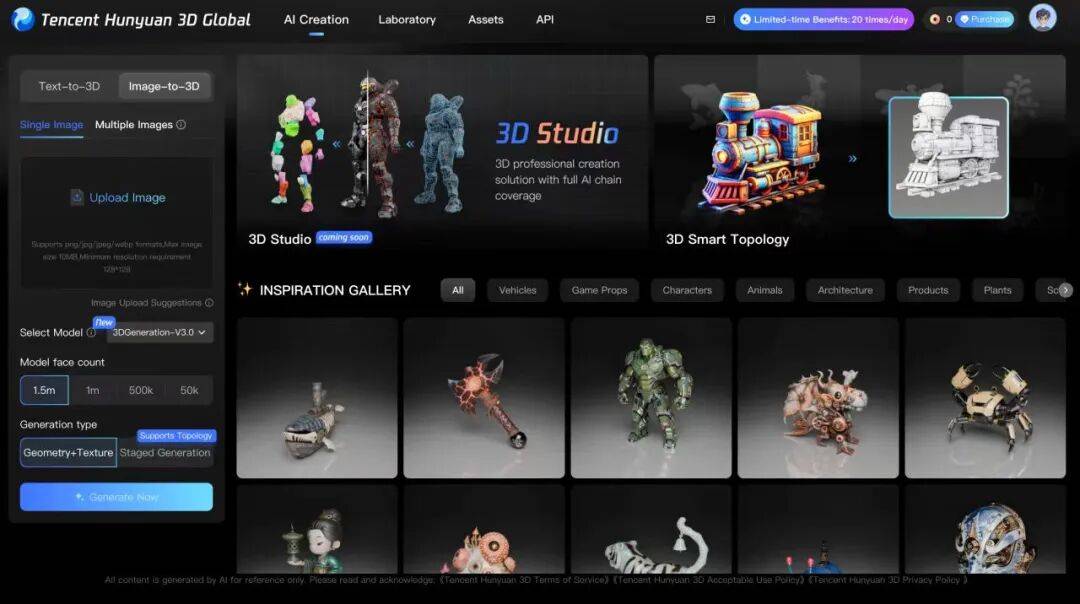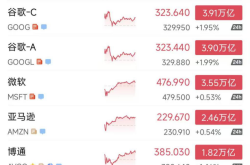Is Tencent Falling Behind in the AI Race?
![]() 11/27 2025
11/27 2025
![]() 566
566

Fifteen years ago, at the dawn of the mobile internet era, microblogging was the battleground. Sina, Tencent, NetEase, and Sohu all launched their own microblogging platforms. Compared to Sina, Tencent's microblogging platform seemed lackluster, sparking concerns that Tencent might miss out on the "mobile internet ticket." After all, in the early days of a new era, aggressive moves often stole the spotlight, while those hesitant to act were seen as outdated.
Business writer Li Xiang was working on redesigning the Chinese edition of Bloomberg Businessweek at the time and was interviewing entrepreneurs across the board. "Interviewing Ma Huateng was incredibly challenging. However, during a topic selection meeting, a senior journalist mentioned that at Tencent's Guangzhou Research Institute, a man named Zhang Xiaolong was developing a new product. That product was WeChat, which officially launched on January 20, 2011," Li recalled.
"Back then, I would have bet that no one in the office could have predicted WeChat would become a national-level app with over 1 billion daily active users," Li Xiang reflected years later. "Many events we considered extremely important at the time, like most significant events in history, did not have a lasting impact."
A similar story played out in the battle between information feeds and short videos. Despite starting late and lagging in recommendation algorithms, Tencent broke through with its Videos channel after internal trial and error and external skepticism.
If we take a broader view and examine Tencent over the past decade or two, we find that it has often not been the first mover or the most aggressive player in the initial waves of change. Will this pattern of latecomer success repeat itself in the AI era?
Perhaps to better understand the situation, we need to shift from a bird’s-eye view to a ground-level perspective and grasp Tencent’s working habits and style.

Nurturing the Product First
Companies, like individuals, often develop their working habits and styles based on their experiences.
Tencent’s earliest product, QQ, emerged from a failed bidding attempt. Subsequently, Tencent decided to "nurture" the product first and, based on the internet usage habits of the time, made numerous practical optimizations to enhance the user experience:
Considering that most people accessed the internet from cybercafes, user content and friend lists were moved from the client to backend servers to prevent data loss. Given the slow internet speeds and difficulty in downloading software, the software size was compressed from the usual 3-5MB to 220KB...
More importantly, with rapid user growth and limited funds for servers, Tencent developed a habit of continuously refining product details and iterating technical services to ensure users stayed connected and messages were delivered promptly.
Ma Huateng later explained, "Today’s internet products are no longer standalone software like in the early days but more akin to services. This requires designers and developers to have a strong sense of user needs. They must be loyal users of their own products while reaching out to other users to understand their real feedback. Only in this way can they stay grounded and move from imperfection to perfection bit by bit."
This approach of treating products as continuous service providers and serving users through detail refinement and rapid iteration has gradually become Tencent’s product development ethos.
WeChat 1.0 only allowed messaging and photo sharing. By version 5.0, core features like voice messaging, video calls, Moments, payments, and sticker stores were all in place.
During the pandemic, Tencent Meeting iterated 14 versions in 40 days. Yuanbao, which integrated DeepSeek earlier this year, updated 30 times in 35 days. These can be seen as manifestations of this ethos.

Minimizing User Disruption
Tencent excels in social networking. The natural web-like structure of social networks encourages open sharing among users, shaping another working style at Tencent: building long-term trust through restraint and minimal intrusion.
Product manager Liu Fei recently speculated on a podcast about how other companies might have developed WeChat if given the chance:
"For example, could they include splash ads? Of course. A flick of the wrist could redirect users to Taobao or JD.com. Each chat interface could have a small ad banner, but users could disable it by registering as a VIP member. If users find Moments ads annoying, they could register as an SVIP.
"Or what about a 'WeChat Festival'? The festival could be filled with promotional posters and activities. Users could earn points by making voice or video calls with friends. Once enough points are collected, they could summon the 'WeChat Dragon,' and many would participate, boosting daily active users through frequent calls. Data on calls, video chats, text messages, and stickers would look impressive, right?
"Also, why does WeChat have a 500-member group limit? What if users could upgrade to a Bronze membership for 5,000 members or a Platinum membership for 50,000 members? Why not allow everyone to @all members? The goal would be to increase open rates and encourage more chatter..."
Although only a few speculative ideas are listed here, they highlight that while taking action is important, restraint is key to building and maintaining long-term user trust.
Zhang Xiaolong has spoken on similar issues, saying, "When making decisions, we must consider what is most reasonable. Reasonableness is the most important factor to consider. If doing something is unreasonable, we will abandon it."
For social products, the most basic requirement of reasonableness is that you must not frequently disrupt users, rush for quick results, or damage relationship chains with intrusive experiences. You must also prioritize stability, security, and privacy so users can communicate here with peace of mind.

Being a Gardener, Not a Hunter
In recent years, when discussing gaming businesses at earnings calls, Tencent executives have often mentioned the term "evergreen."
When "evergreen games" were first mentioned, many did not understand, especially seeing the explosive rise of new games like Genshin Impact and Eggy Party while Tencent still relied on products that had been operated for years or even over a decade. People worried that Tencent’s throne might be shaken and that it had learned a lesson from its rivals.
However, after several years, it became clear that these evergreen products were the most resilient. Massive national-level products like Honor of Kings continued to grow steadily. Moreover, under the approach of valuing long-term gameplay, new evergreen contenders like Arena Breakout, Valorant, and Delta Force emerged methodically.
Tencent’s evergreen products extend beyond games, including 26-year-old QQ, 21-year-old Tencent News and QQ Browser, 20-year-old QQ Music, 14-year-old WeChat and Tencent Video, and more.
In the fast-paced internet industry, such results are not guaranteed and require long-term cultivation and continuous iteration. Driving so many products through cycles has also changed the company’s organizational behavior: it may not gamble on short-term explosions but focuses more on deep-rooted stability and sustainability. It does not easily sacrifice long-term trust for short-term growth and emphasizes "lasting value" over short-term KPIs.
This aligns with Wang Yangming’s concept of "tempering through practice," which has shaped Tencent’s working style: not impatient, not chasing hot trends or short-term stories, but patiently cultivating long-term value.
This is a "gardener’s" philosophy rather than a "hunter’s" one. Hunters seek quick kills and immediate rewards. Gardeners focus on fertile soil and favorable climates, patiently waiting for flowers to bloom.
In the short term, most would consider hunters cool and capable, while gardeners seem slow and unexciting, lacking presence. However, patient investors with real money, like Duan Yongping, tend to favor this style.

Real Human Needs for AI
As the AI era arrives, many believe it belongs to aggressive hunters who must invest recklessly, accumulate more computational power, and chase larger models to succeed.
While computational power and models are essential foundations, building a solid foundation differs from constructing a finished building. Technology has always been a means, not an end. Its development ultimately aims to materialize applications and serve people sustainably.
Moreover, the unique nature of AI technology imposes new requirements on its applications.
Using the familiar Mobile Internet as an analogy, its core strength lies in "connectivity anytime, anywhere." Its applications can significantly reduce the time and space costs of connections, greatly enhancing the efficiency of life and work.
However, the core strength of AI technology lies in "ubiquitous intelligence." Its applications will enter various highly sensitive scenarios of decision-making, creation, and interaction, with outputs that carry uncertainty and hallucination risks. This also brings many controversial questions, such as: Will AGI arrive soon? Will AI replace many professions? What should the relationship between AI and humans be?
These questions concern human agency and autonomy and determine that the foundation of AI applications lies not in a rapid race for traffic but in a long-term race for trust and user value.
How can we create genuine user value and earn long-term user trust? Fundamentally, the deciding factors may include:
First, AI applications must refine uncertain technologies into stable and reliable user experiences.
Second, AI applications should not force-feed users flashy features but seamlessly integrate into services to solve real problems.
Third, the prosperity of the AI ecosystem requires long-term trust. The future AI world will have countless Agents, mini-programs, and SaaS applications. Ultimately, the one providing the most stable expectations will bring this ecosystem together.
Achieving these requires both capability and resolve.
Currently, Tencent adopts an "AI in All" approach, integrating AI into most of its internal products and services. It connects Yuanbao with high-frequency scenarios like WeChat, QQ, Tencent News, and Tencent Meeting while gradually expanding AI capabilities in WeChat to search, summarization, and image recognition. As more people use AI to summarize meetings and mention Yuanbao in Videos channel comments, user habits are gradually forming.
During a recent earnings call, Tencent President Liu Chiping revealed that "WeChat will eventually launch an AI agent," allowing users to complete the entire process from needs understanding to service delivery within the ecosystem. Creating another WeChat in the AI era or evolving WeChat into a national-level AI capability based on its existing ecosystem may be the more logical path.
Here, the relationship between AI and humans is bidirectional. AI technologies grow through applications, while existing products enhance their ability to serve users through AI. This is Tencent’s approach developed over twenty years of cultivating evergreen products: treating products as continuous service providers, serving users through detail refinement and rapid iteration, and building long-term trust through restraint and minimal intrusion.
Ultimately, while technology can evolve rapidly, human nature and intrinsic needs remain constant. After the initial excitement fades, life continues.

A Marathon, Not a Sprint
In 2023, at the beginning of the large model wave, Ma Huateng made a widely quoted remark: "In the context of the Industrial Revolution, releasing the light bulb a month earlier mattered little in the long run. The key is to solidly develop the underlying algorithms, computational power, and data and, more critically, to achieve practical applications."
At a recent earnings call, Liu Chiping mentioned, "If you wait a bit and see our next-generation model, you will notice a significant improvement in the capabilities of Hunyuan." He stated, "We do not believe any single model in China holds a decisive advantage. Every company is in a very close competition, with different models possibly excelling in different scenarios."
 The image shows the international website of the Hunyuan 3D Creation Engine. Tencent prioritizes developing such practically usable capabilities in real business scenarios.
The image shows the international website of the Hunyuan 3D Creation Engine. Tencent prioritizes developing such practically usable capabilities in real business scenarios.
The market naturally gravitates toward "bigger, faster, more exciting" stories. Everyone enjoys watching intense battles, cash subsidies, and disruptive innovations.
In comparison, Tencent’s pursuit of "more stable, more enduring, more trustworthy" practical applications seems as unexciting as a student who consistently ranks in the top three but never skips class or gets into fights.
Of course, no student can ace every exam. This AI wave may differ from previous technological revolutions.
In the face of the singularity of intelligence emergence, speed might be everything—one slow step could lead to falling behind. Whether Tencent’s "gardener" approach can remain effective against the brute force aesthetics of the Scaling Law is certainly debatable.
However, inevitably, at the dawn of any technological revolution, information overload, sharp opinions, and chaotic rhythms abound, along with anxiety that "not going all in means death." Ultimately, the players who truly succeed often seem "not that surprising" when looking back years later.
The more important the matter, the less it resembles a sprint and the more it resembles a marathon, filled with variables and reversals.
The running philosophy espoused by Eliud Kipchoge, the holder of the marathon world record, might just provide some valuable insights: sustain a consistent pace, keep your composure, and always run in accordance with your inner rhythm.






